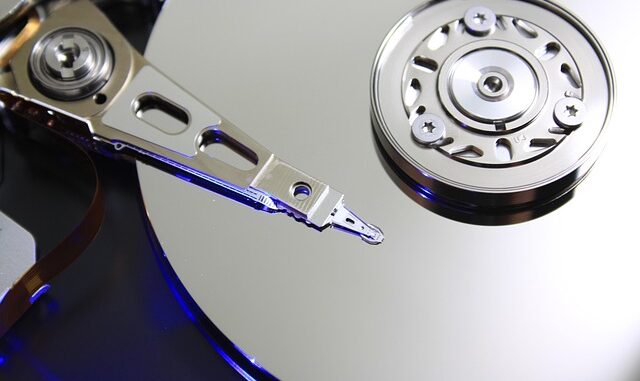
Summary
From punch cards to the cloud, data backup has evolved alongside technology. Modern backup solutions prioritize security, automation, and accessibility to safeguard valuable data against evolving threats. The future of backup lies in intelligent, cloud-native solutions that adapt to the ever-changing digital landscape.
Protect your data with the self-healing storage solution that technical experts trust.
** Main Story**
Data, it’s the lifeblood of pretty much everything we do these days. Protecting that data? It’s not just a good idea, it’s absolutely crucial. And how we do it has changed a lot over the years, it’s a fascinating journey. So, let’s take a quick trip through the evolution of data backup, from its humble origins to the complex, sophisticated solutions we see today, and peek into what the future might hold.
From Punch Cards to Cloud: A Quick History
Believe it or not, the need for data backups started way back with the Industrial Revolution. Remember punch cards? Those were like the cave paintings of the digital age! They were a basic form of backup; at least, you could duplicate information if needed, right? That said as technology marched on, magnetic tapes stepped in, offering more storage and costing less to process. A definite upgrade, and a move towards more efficient and scalable backup.
Then came the hard disk drives (HDDs) in the mid-20th century. At first, they were pricey and didn’t hold much, but over time, they got bigger and cheaper. With the rise of personal computers and the huge increase in digital data, HDDs became a must-have for backups. Think about it, before cloud storage, a external harddrive was all that stood between you and your dissertation getting wiped. Plus, portable media like floppy disks, zip drives, and CDs/DVDs made backups even easier. I remember spending hours burning music CDs using Nero, just to make a copy. Those were the days!
The real game-changer? The internet and cloud computing. Cloud storage offered seemingly endless space, remote access, and better security. Businesses jumped on cloud backup solutions, storing and accessing data from anywhere. This led to Backup as a Service (BaaS), giving businesses managed backup and disaster recovery.
Modern Backup: Security, Automation, and Easy Access
What do modern backup solutions focus on? Security, automation, and accessibility, plain and simple. They use things like data deduplication, compression, and encryption to save space and protect against unauthorized access. Automation? It’s key. Scheduled backups reduce human error, because lets face it, we’re only human and we forget to click the button! Plus, cloud-native solutions play nicely with cloud platforms, offering scalable and affordable protection. Makes sense, doesn’t it?
The Future of Backup: Smart and Flexible
Looking ahead, I think we’re going to see even smarter and more flexible backup solutions. How so? Artificial intelligence (AI) and machine learning (ML) are going to be huge. They’ll help with predictive analytics, automated threat detection, and better backup performance. Immutable backup storage will be a big deal too, adding extra protection against ransomware and data manipulation. And since many businesses use hybrid cloud environments, backup solutions will need to work seamlessly across multiple platforms. The rain lashed against the windows, and the wind howled like a banshee while I was writing this section – if only backups could be that theatrical!
Embracing the Data Protection Evolution
All this shows our ongoing commitment to protecting valuable data. From punch cards to the cloud, the goal is to keep data safe from loss, corruption, and unauthorized access. So, what’s the takeaway here? As tech keeps moving forward, backup strategies must adapt. Businesses and individuals need to prioritize data protection, investing in solid backup solutions that ensure security, accessibility, and continuity. It’s not just about having a backup; it’s about having the right backup for the future. So, are you ready for what’s next?


The evolution of data backup highlights the critical need for adaptable strategies. As threats become more sophisticated, the integration of AI and machine learning for predictive analytics and automated threat detection will be crucial for robust data protection.
Thanks for highlighting the role of AI and machine learning! I agree that these technologies are becoming essential for anticipating and mitigating threats. What other advancements do you see shaping the future of data backup and recovery?
Editor: StorageTech.News
Thank you to our Sponsor Esdebe
The discussion of cloud-native solutions is interesting, particularly regarding scalability. How do you see the interplay between serverless architectures and data backup strategies evolving to further enhance efficiency and reduce operational overhead?
That’s a great point! Serverless architectures offer incredible flexibility and cost savings, but they also introduce new challenges for data backup. I believe we’ll see more tightly integrated serverless-aware backup solutions emerge, offering granular recovery options and automated scaling to match workload demands. What are your thoughts on vendor lock-in within the serverless space?
Editor: StorageTech.News
Thank you to our Sponsor Esdebe
Punch cards as cave paintings of the digital age – love that analogy! Makes you wonder what future generations will say about our endless cloud storage. Will they see it as an art installation or a digital landfill? Let’s hope our backups survive the critique!
That’s a fun thought! Imagine future archeologists sifting through our digital archives. Maybe they’ll create museums dedicated to cat videos and data backups! It’s a good reminder to think about data curation and longevity. How can we ensure important information isn’t lost in the digital noise?
Editor: StorageTech.News
Thank you to our Sponsor Esdebe
Given the rise of edge computing, how will data backup strategies evolve to accommodate decentralized data generation and processing while maintaining security and accessibility?
That’s a really important question! Edge computing definitely throws a wrench in traditional backup models. I think we’ll see more emphasis on distributed backup architectures and possibly even AI-powered intelligent tiering to determine what data needs immediate backup versus what can be backed up less frequently. Thoughts?
Editor: StorageTech.News
Thank you to our Sponsor Esdebe